UC Davis Traditions: Past and Present
Special Collections presents this exhibit of selections from the University Archives Photographs Collection featuring campus traditions, some of which continue to this day.
The University Archives Photographs Collection offers a visual record of the history of the University of California, Davis. The collection contains photographic prints and negatives, and depicts buildings and grounds, faculty and staff, campus events, classes and classrooms, student clubs and activities, departments, and sporting events.
For more information or to share your memories of UC Davis traditions, please email Special Collections at speccoll@ucdavis.edu
Frosh Dinks
Members of the freshman class, as a sign of unity, wore caps known as dinks. The dinks, which were blue with a gold button and had “Cal Aggie” lettered in gold across the front, were worn by all freshmen to classes and meetings. If the freshmen won the Frosh-Soph Brawl, which occurred during the first month of classes, they could stop wearing the dinks immediately. However, if the sophomores won the brawl, the freshmen had to wear the dinks until the Pajamarino Rally, which was held during Homecoming Weekend. This campus tradition went out of fashion in the 1960s.



President’s Reception
Each fall during the 1950s and 1960s, the University of California President would visit Davis to welcome new students to the University and those returning to the campus. The 1956 El Rodeo Yearbook described the event which was sponsored by the Cal Club as “one of the first and biggest social events in the fall.” The receptions were held in the Memorial Union, Freeborn Hall, Everson Hall or the Faculty Club and often included a dance.

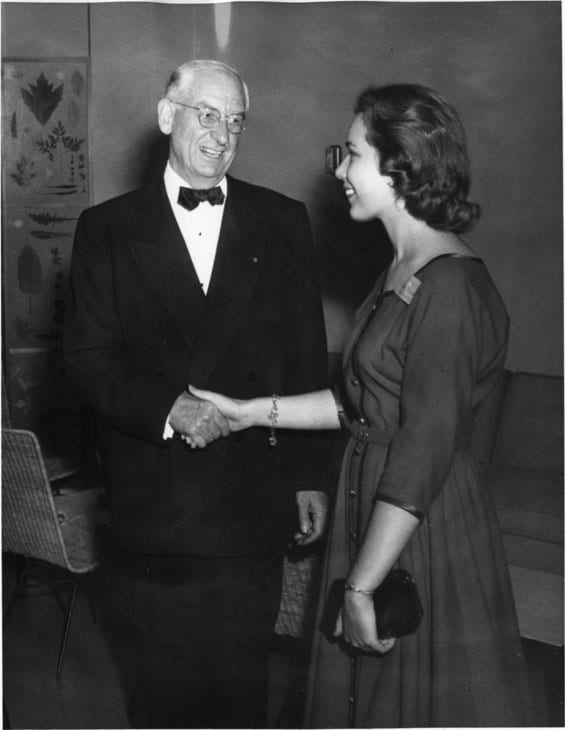
Tank Rush and the Frosh-Soph Brawl
Class rivalry dates back to at least 1913 when a class “fight” took place at the swimming tank on October 3. In subsequent years, a tank rush was formalized and the freshmen and upperclassmen battled to push each other into the tank.
The tank rush evolved into the Frosh-Soph Brawl. At different times, the Brawl, which was held during the first month of classes, consisted of the following events between the freshmen and sophomores: a tug-of-war, obstacle race, jousting, a haystacking contest, and the tank rush.
If the freshmen won the Frosh-Soph Brawl, they could stop wearing the frosh dinks immediately. However, if the sophomores won the brawl, the freshmen had to wear the dinks until the Pajamarino Rally, which was held during Homecoming Weekend. The Frosh-Soph Brawl tradition survived at least until the 1960s.




Pajamarino
The present day Pajamarino traces its roots back to 1912 when according to the 1913 El Rodeo Yearbook: “A big pajama rally was held for the basketball team on December 6, 1912. A large bonfire, quartets, and violin solos were the features of the evening.”
By 1915 the rally was known as Pajamarino and was held on the eve of a football game in October. During the 1920s, the pajama clad rally students “serpentined” through the main streets of Davis and returned to campus for a bonfire. The tradition evolved and the pajama clad students began marching to the train station to meet returning alumni. They accompanied the alumni back to the campus for the rally around the bonfire. After the rally, a dance was held.
The Pajamarino tradition continues today.

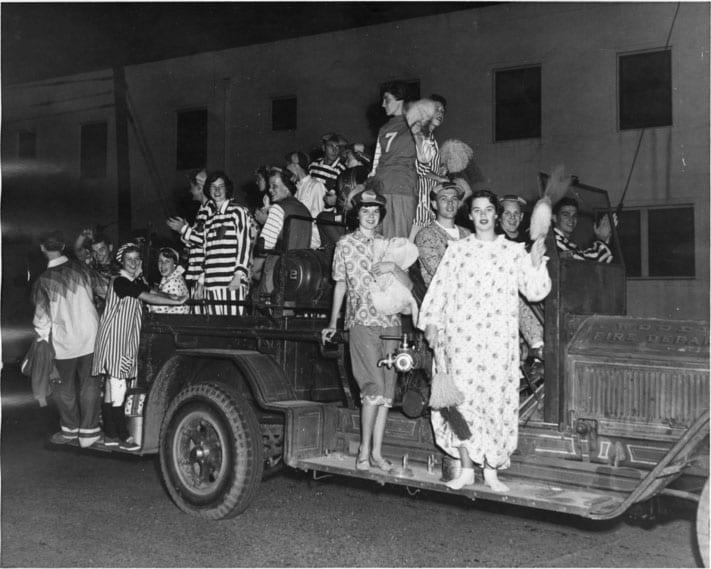
Labor Day
In 1915, University Farm students initiated an annual “Labor Day” event where they conducted volunteer work on campus improvements. They drew inspiration from UC Berkeley, which had started the event in 1897. The first Labor Day projects at Davis included the construction of athletic fields, fences, and walks. Later the event became a leap year activity, taking place on February 29.
Subsequent projects included: installation of an irrigation system for the new grass lawn on the Quad (1932); assistance with digging the hole for the swimming pool by the new gymnasium (1936), and cleaning up Putah Creek in preparation for plantings in the arboretum (1940).
The last traditional leap year Labor Day was held in 1964. Activities included the demolition of the thirty year old cashier’s building, construction of bleachers for the relocated horse arena, painting of the football bleachers and baseball dugouts, improvements of recreational areas along Putah Creek, and planting of trees in Orchard Park.
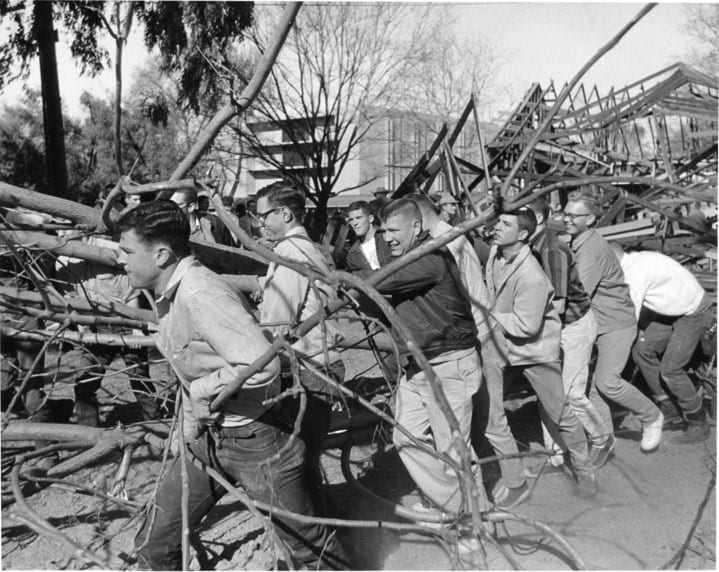

Wild West Days
Wild West Days were originally held on the Davis campus in the fall of 1960. The event, which occurred over a weekend, wasn’t held during 1961-1962 but resumed again in the spring of 1963. According to the
Centennial Record: “for the two days before the activities, western clothes are worn to classes and it is permissible for students to ride horses on campus.” The weekend activities included bronc riding, wild cow milking, calf roping, steer riding, hog calling, a greased pig scramble, and barrel racing contests. Wild West Days were held at least until 1969.
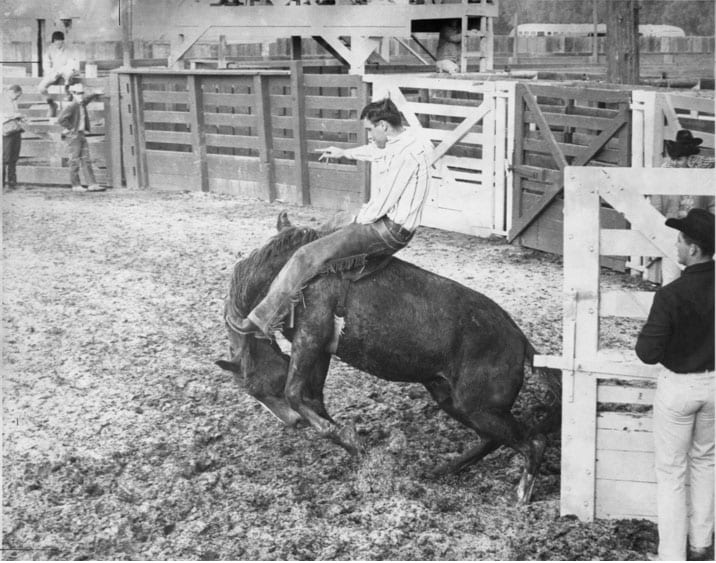
Little I
The Little International Livestock Show or “Little I” was started in 1937 by the Golden Hoof Club to provide competition in grooming and showmanship for students working with animals from the University herds.
At some point, ASUCD assumed sponsorship of the event which was then advertised as an event designed for students, experienced or not, who were interested in showing animals. ASUCD awarded trophies and ribbons to the winners.
“Little I” is still held on campus and is now sponsored by the UCD Young Cattleman’s Association.

Spring Sing
Spring Sing was a popular campus event that involved all campus living groups taking part in competitive singing.
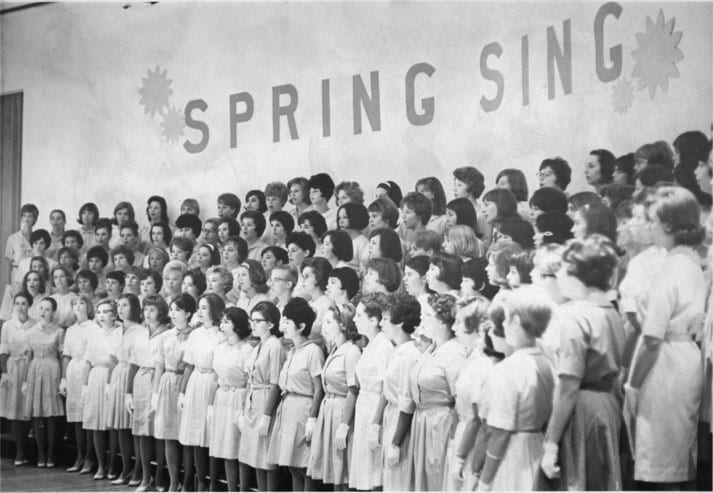
Picnic Day
The Picnic Day tradition started on May 22, 1909 with a “Dedication Basket Picnic,” said to have been suggested by Mrs. Carolee Shields, to honor the opening of North Hall, the first dormitory on the campus of the University Farm (now the University of California, Davis).
Picnic Day has since become the annual open house for the campus and has grown into one of the largest student-run events in the U.S.
From 1948 until the early 1990s, Picnic Day festivities included an Aquacade. The Aquacade featured synchronized swimming, live music, and a poolside variety show.
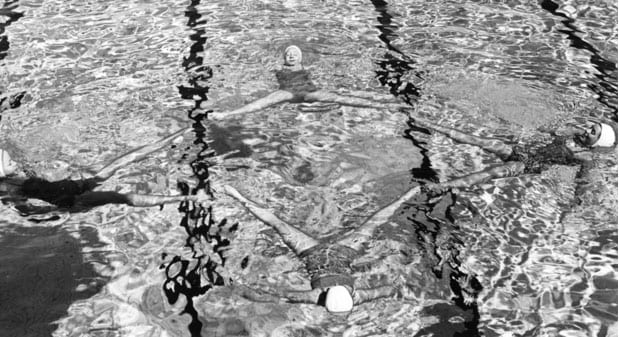

Whole Earth Festival
The first Whole Earth Festival took place March 17-21, 1970. The idea behind the festival was brought to the Davis campus during the winter vacation break of 1969. A member of the ASUCD Experimental College attended a San Francisco lecture by Swami Satchidananda where the spiritual leader’s close friend, John McConnell, described the concept of an Earth Day.
UCD art historian Jose Arguelles seized upon the idea and 400 of his Art 147 and Art 138B classes took on planning of a Whole Earth Week as a final examination.
